Abstract
Regional cerebral blood flow was measured by injection of 133Xenon into the internal carotid artery in 11 patients with cerebrovascular disease. All patients were studied under general anaesthesia, first at normocapnia and then at hypocapnia. The 15 minute isotope clearance curves were analysed by computer by two-compartmental analysis and regional changes in flow and the proportions of fast and slow clearing tissue obtained at two levels of arterial CO2 tension. Hypocapnia caused a fall in blood flow which was consistently accompanied by a decrease in the proportion of fast clearing tissue. Regional changes were not significantly different from the hemisphere mean changes. There was no correlation between changes in blood flow through grey matter and the proportion of fast clearing tissue on a hemisphere mean basis, but on regional analysis the data from 10 out of the 11 patients showed that in areas where blood flow through grey matter changed most the proportion of fast clearing tissue changed least and vice versa. A hypothesis has been proposed to explain this phenomenon.
Full text
PDF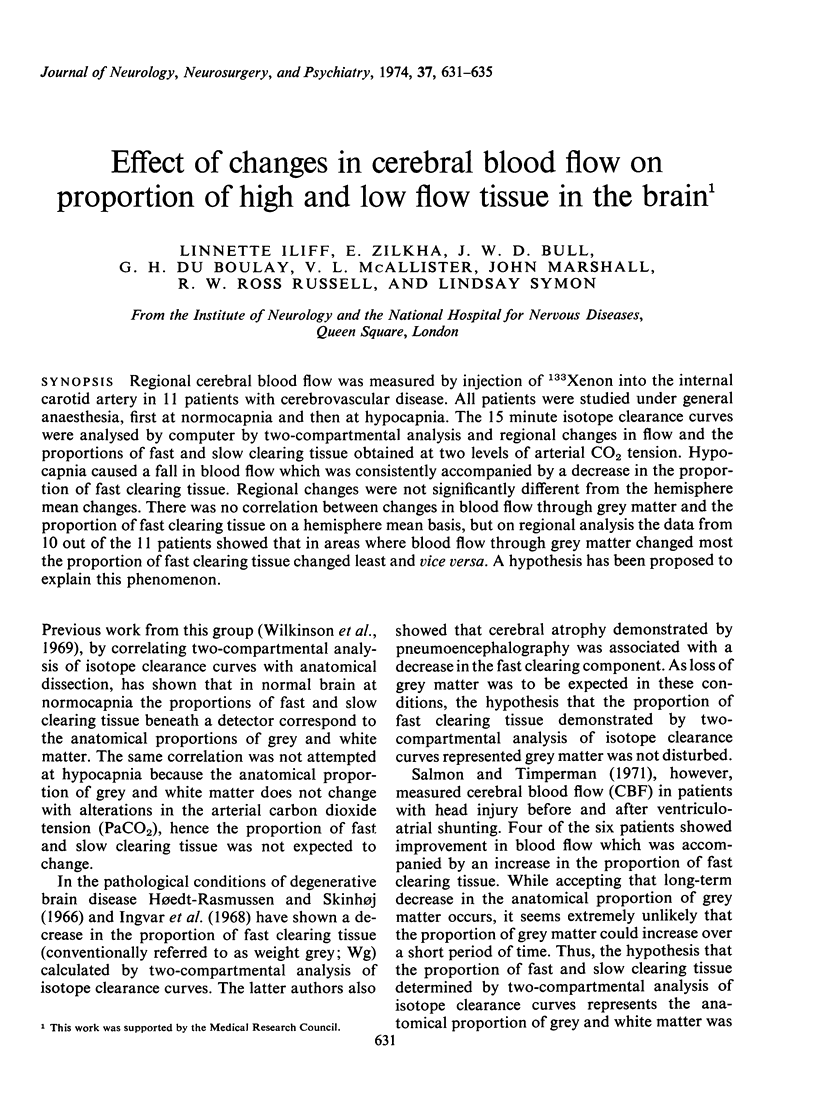
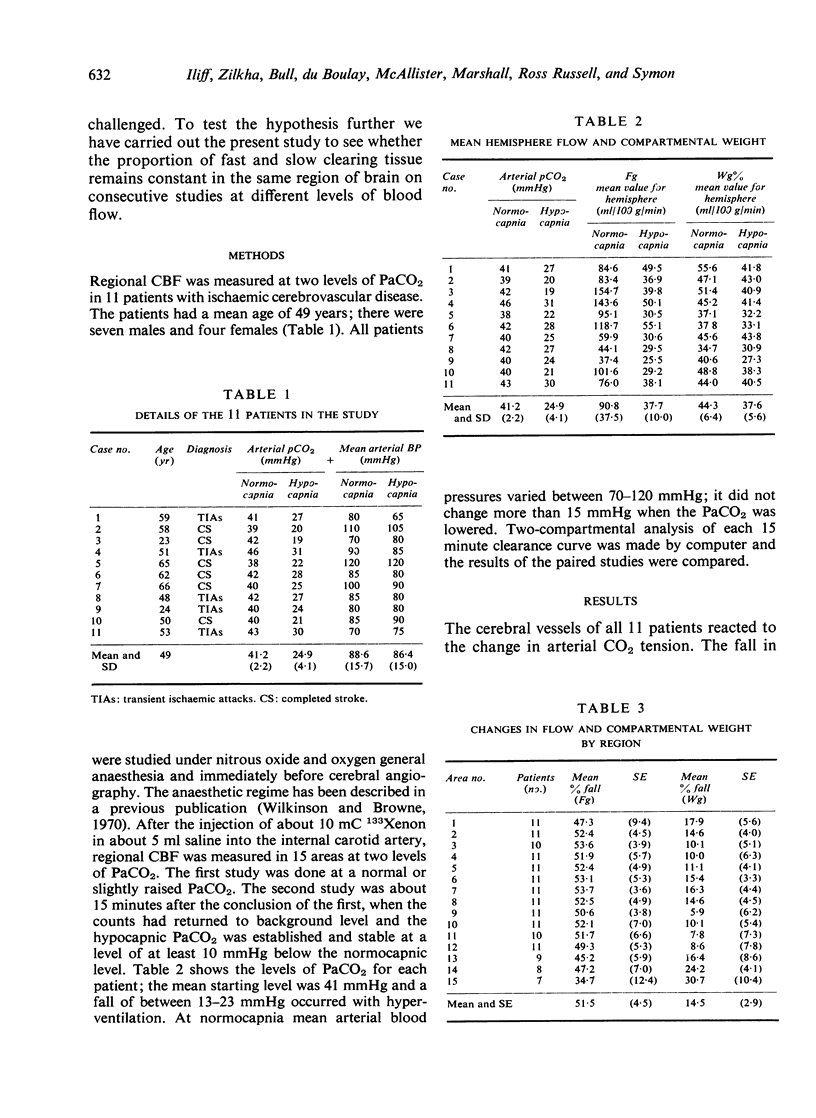
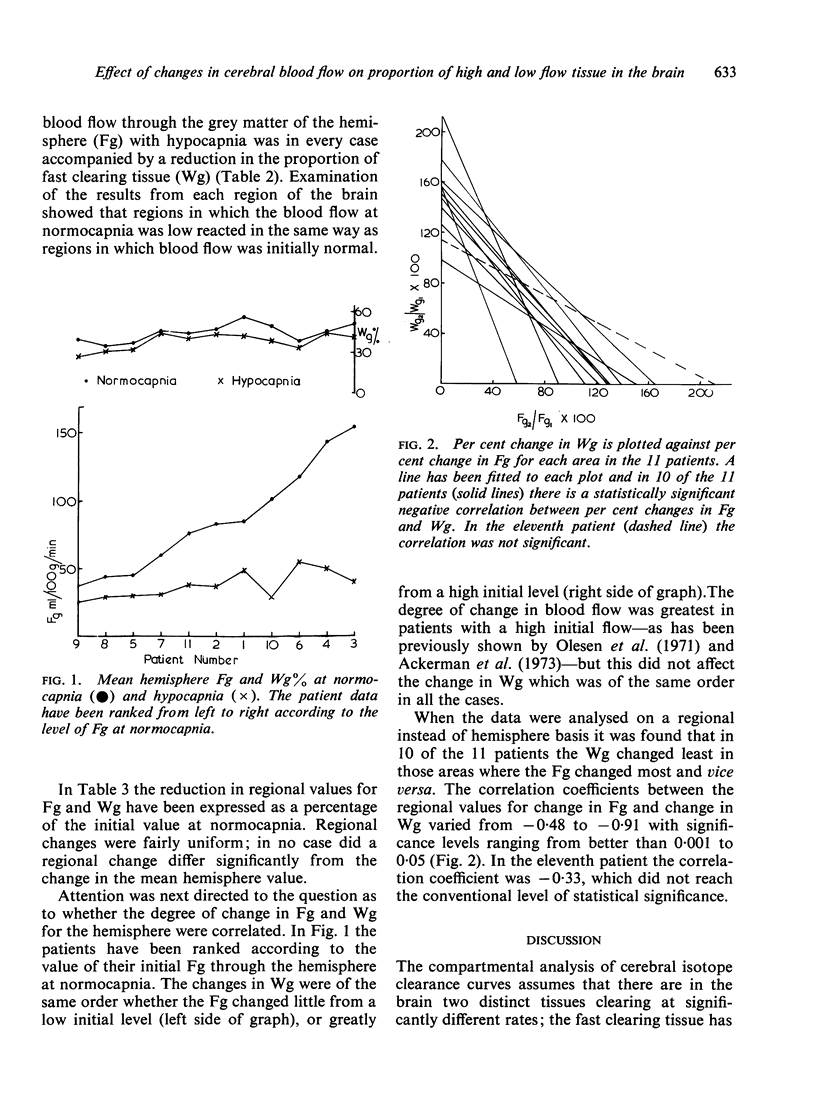
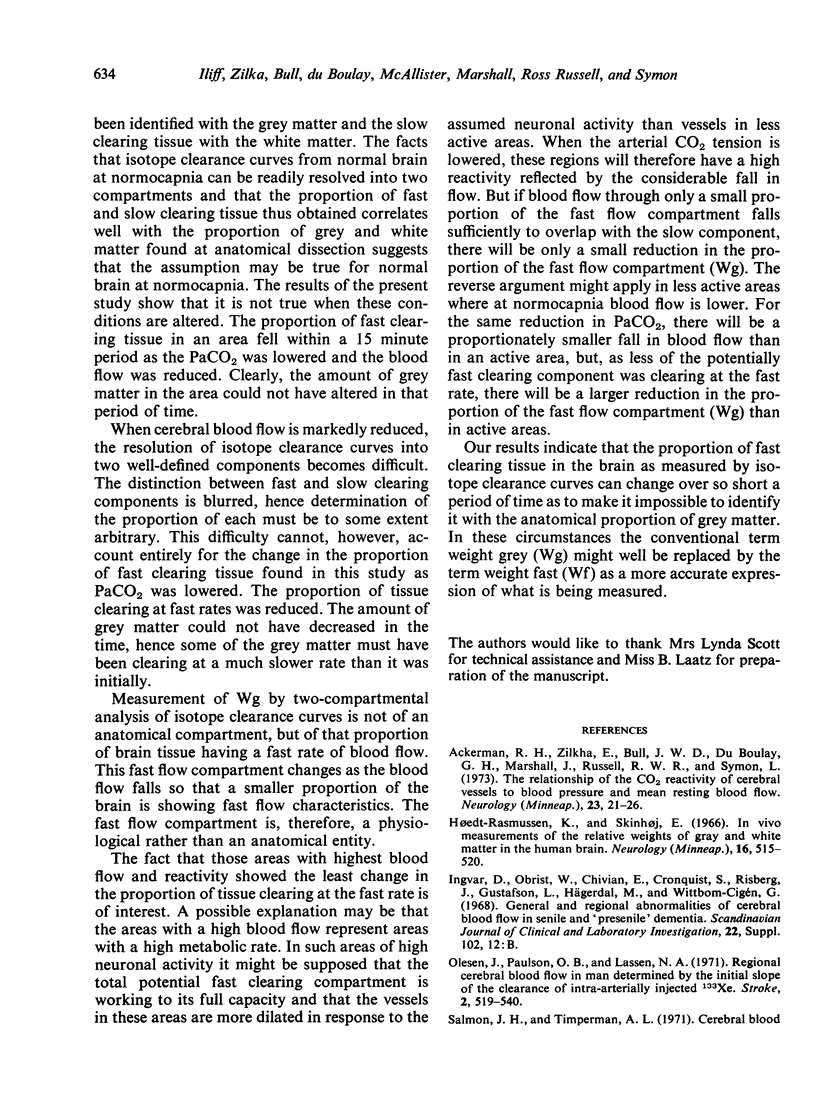
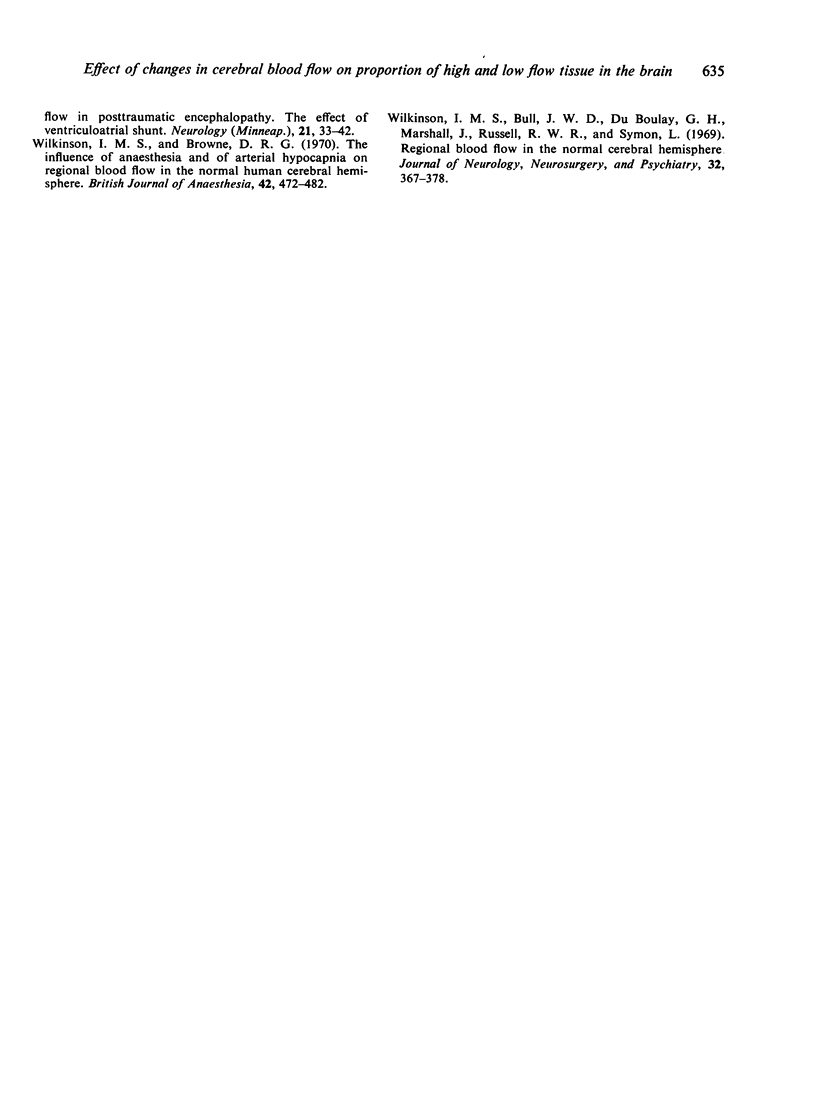
Selected References
These references are in PubMed. This may not be the complete list of references from this article.
- Ackerman R. H., Zilkha E., Bull J. W., Du Boulay G. H., Marshall J., Russell R. W., Symon L. The relationship of the CO 2 reactivity of cerebral vessels to blood pressure and mean resting blood flow. Neurology. 1973 Jan;23(1):21–26. doi: 10.1212/wnl.23.1.21. [DOI] [PubMed] [Google Scholar]
- Hoedt-Rasmussen K., Skinhoj E. In vivo measurements of the relative weights of gray and white matter in the human brain. Neurology. 1966 May;16(5):515–520. doi: 10.1212/wnl.16.5.515. [DOI] [PubMed] [Google Scholar]
- Olesen J., Paulson O. B., Lassen N. A. Regional cerebral blood flow in man determined by the initial slope of the clearance of intra-arterially injected 133Xe. Stroke. 1971 Nov-Dec;2(6):519–540. doi: 10.1161/01.str.2.6.519. [DOI] [PubMed] [Google Scholar]
- Salmon J. H., Timperman A. L. Cerebral blood flow in posttraumatic encephalopathy. The effect of ventriculoatrial shunt. Neurology. 1971 Jan;21(1):33–42. doi: 10.1212/wnl.21.1.33. [DOI] [PubMed] [Google Scholar]
- Wilkinson I. M. Browne DR: The influence of anaesthesia and of arterial hypocapnia on regional blood flow in the normal human cerebral hemisphere. Br J Anaesth. 1970 Jun;42(6):472–482. doi: 10.1093/bja/42.6.472-a. [DOI] [PubMed] [Google Scholar]
- Wilkinson I. M., Bull J. W., Duboulay G. H., Marshall J., Russell R. W., Symon L. Regional blood flow in the normal cerebral hemisphere. J Neurol Neurosurg Psychiatry. 1969 Oct;32(5):367–378. doi: 10.1136/jnnp.32.5.367. [DOI] [PMC free article] [PubMed] [Google Scholar]


